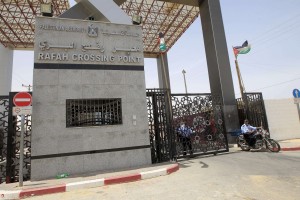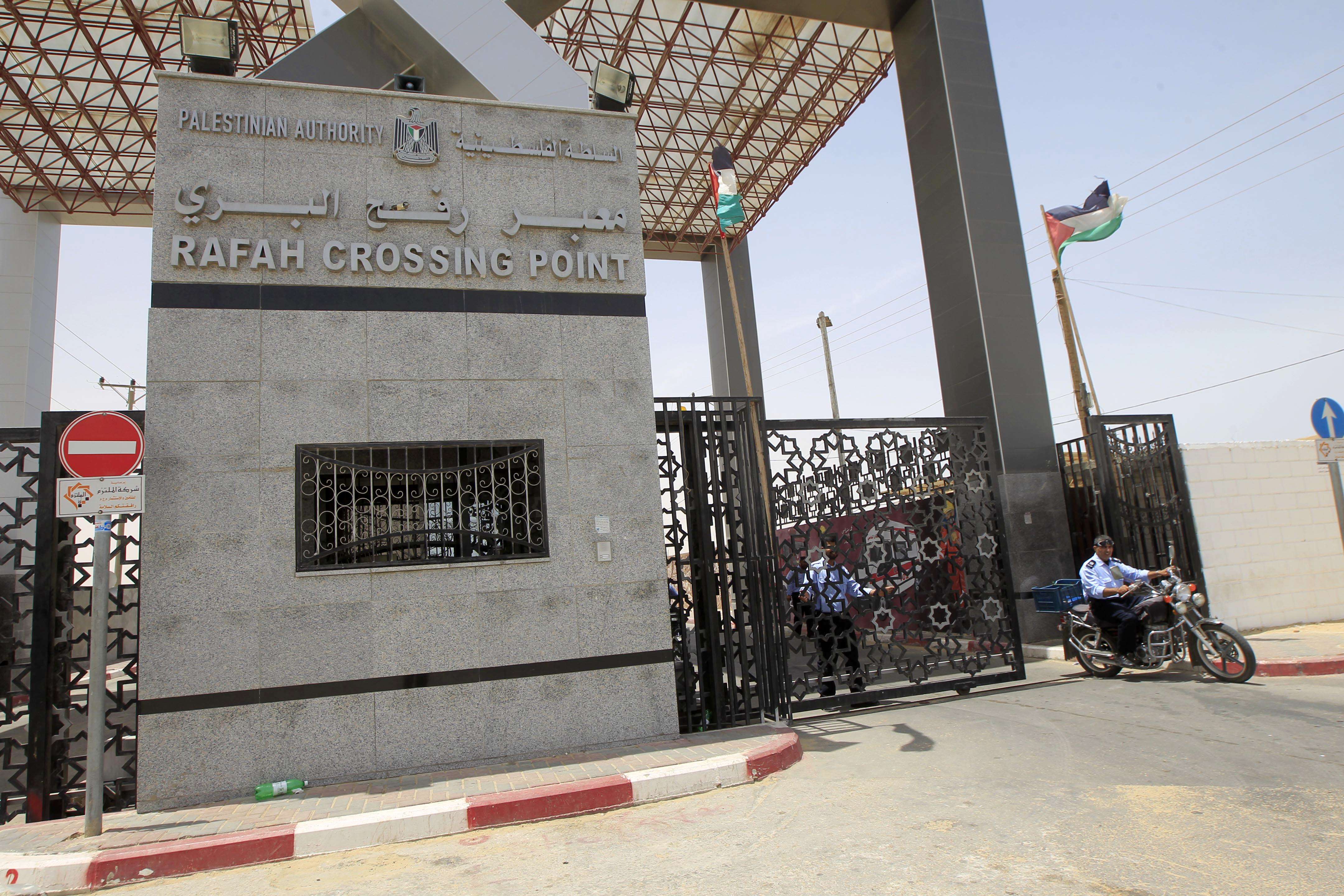
(AFP Photo)
Egypt announced that it will open the Rafah border crossing on Wednesday in one direction, allowing Palestinians into the Gaza Strip.
State-run MENA reported that the crossing will be opened to admit “Palestinians who are stuck, into the Gaza Strip.” The border will be opened Wednesday afternoon for four hours, and for nine hours on Thursday.
Palestinian Ambassador to Egypt Jamal Al-Shobaki said Egyptian authorities officially notified the embassy of the decision, which follows “high level intensive communication” with Egyptian officials, in statements published by the Palestinian Embassy in Cairo.
He recommended that all Palestinians inside Egypt go to Al-Arish in North Sinai to prepare to leave.
The Rafah border crossing is the main entry and exit point to the strip and connects the strip to Egypt, and from there, to the outside world.
The border crossing has been shut indefinitely by Egyptian authorities in October after deadly attacks in North Sinai left 30 Egyptian security personnel dead.
According to initial reports cited by the most recent United Nations Office for Coordination of Humanitarian Affairs (OCHA) report in mid-November, some 3,500 to 4,000 had registered with the Palestinian Embassy in Cairo. This was to organise their entry into the Gaza when the border crossing is re-opened.
Gaza is densely populated, hosting more than 1.8 million people in the 40km long strip. There are thousands inside who need to leave the strip, including patients who may not have access to the healthcare they need inside Gaza, since Gazan hospitals lack equipment and resources.
People with conditions like cancer or heart disease commonly seek healthcare in Egypt.
Gaza’s health ministry spokesman Ashraf Al-Qedra has issued repeated statements throughout the past few weeks on how much the health sector in the strip is struggling.
In a statement on Monday, he said “thousands of patients are in extremely concerning health conditions”, as a result of the closure of the Rafah border crossing.
“Containing their condition is related to an urgent Egyptian decision to open” the border crossing, he added. He said opening the crossing is necessary to allow people in need of medical transfers outside, to allow patients stuck outside back into the strip, to admit medical delegations who will perform specialised surgical operations and to admit medicine and relief convoys.
In addition to patients, closing the strip primarily affects students who need to access their colleges abroad, and people who live and work outside the strip.
Between 7 July and 26 August Israel carried out a military operation in Gaza titled “Protective Edge” with the aim of stopping “Hamas rocket fire into Israel”. It ended with an Egyptian brokered ceasefire but left more than 2,200 dead on the Palestinian and Israeli sides, the vast majority under the first, and thousands of homes in the strip either completely or partially destroyed.
The OCHA report said, “since July 2014 up until 24 October, the Rafah crossing was opened and operated on most days, despite significant restrictions on the number of passengers allowed to cross with an average of 13,000 people crossing between July through September.”
It added that the border crossing was only shut down for 22 days in the first half of 2014, with an average 6,400 people crossing every month.



